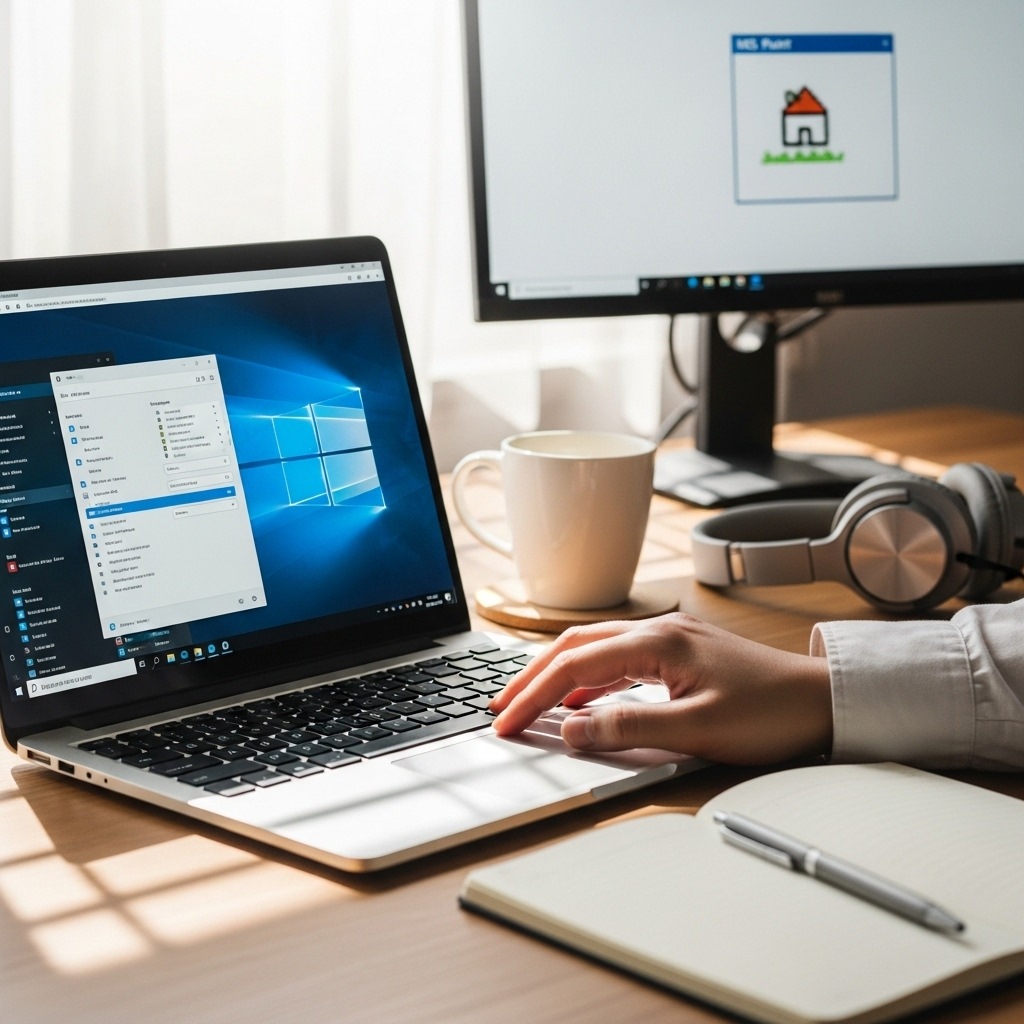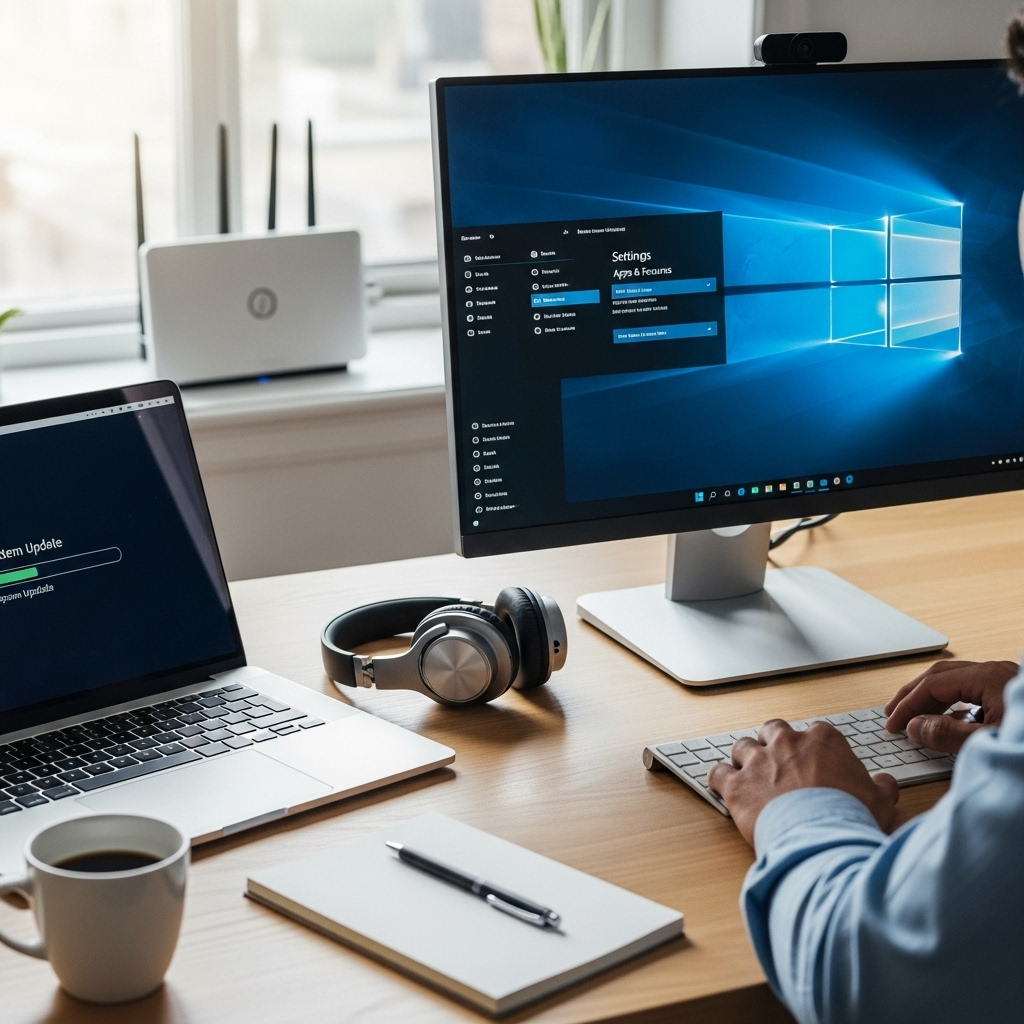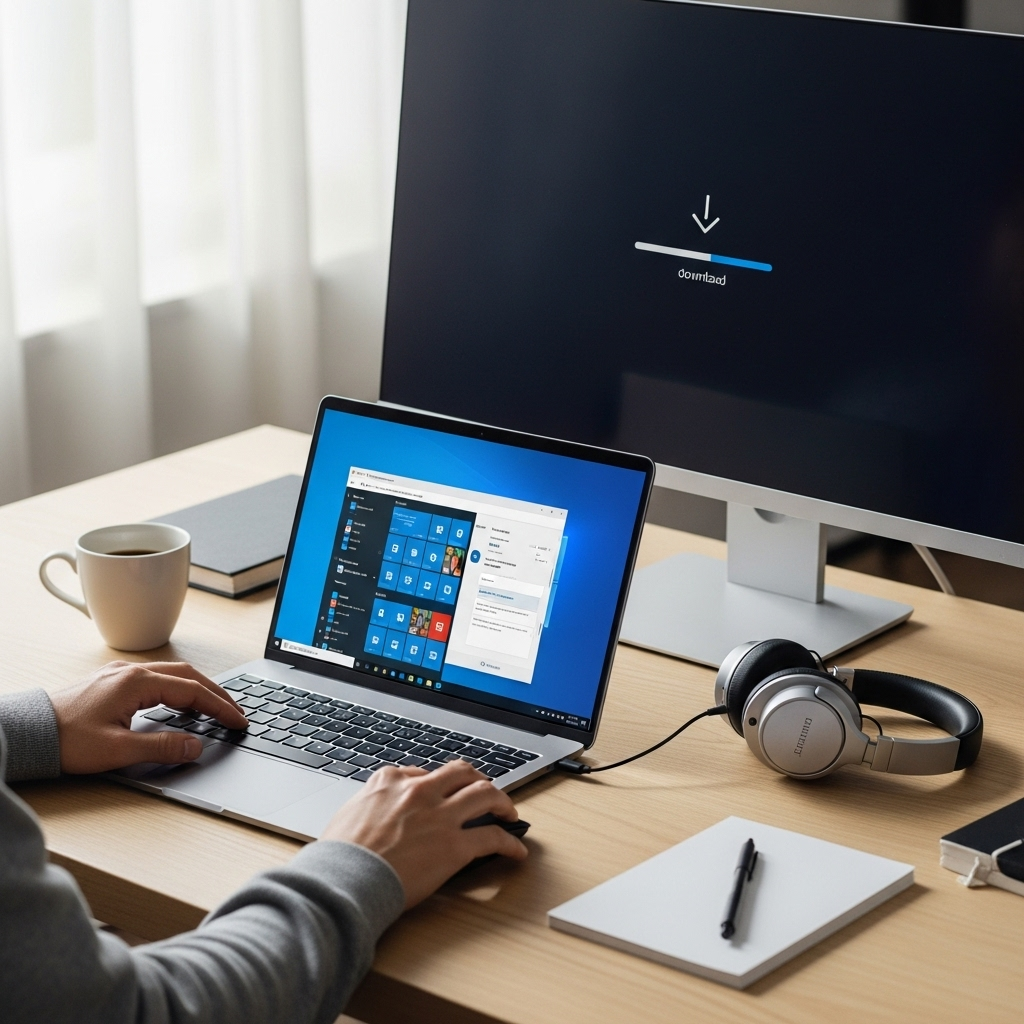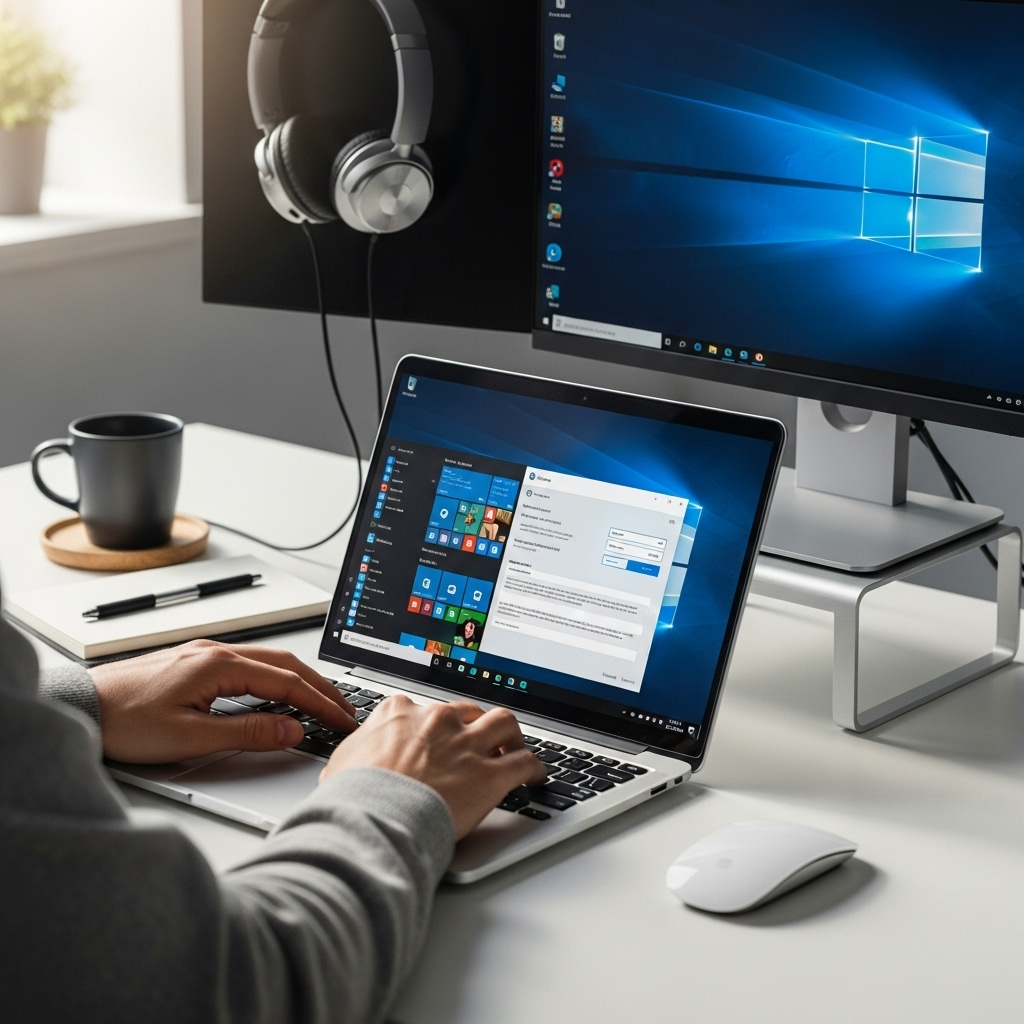“`html
MS Paint Download For Windows 10: Your Essential Guide
Quick Summary: You don’t need to download MS Paint for Windows 10; it’s already built-in! Simply search for “Paint” in the Windows search bar to open this classic, free image editor. This guide shows you how to find it and make the most of its simple yet powerful tools.
Hey there, fellow Windows users! Mike Bentley here, ready to tackle another common question that pops up on my repair desk. Have you ever found yourself needing to quickly edit an image, draw a simple diagram, or just doodle a bit, and realized you couldn’t find that familiar, trusty program – MS Paint?
If you’re using Windows 10 and thinking, “Where did MS Paint go?” or “Do I need to download it?”, you’re definitely not alone. It’s frustrating when a tool you expect to be right there suddenly seems to have vanished. But don’t worry! The good news is that MS Paint isn’t gone; it’s just part of Windows 10 in a way that might be a little less obvious than you remember. And the best part? You don’t need a separate download for it!
In this guide, I’ll walk you through exactly how to find and open MS Paint on your Windows 10 computer. We’ll cover its basic functions, some handy tips, and even touch on why it’s still a valuable tool even with more advanced software out there. Let’s get your creative juices flowing without any fuss!
Why You Don’t Necessarily “Download” MS Paint for Windows 10
It’s a common misconception, especially for those who remember older versions of Windows where programs might have required separate installations. Microsoft has integrated MS Paint directly into Windows 10. This means that unless your computer’s operating system has been heavily modified or you’re running a very stripped-down version, MS Paint should already be there, ready to use.
Think of it like a built-in tool in your toolbox. You don’t need to go buy a screwdriver if one is already in the box; you just need to know where to find it. MS Paint operates in a similar fashion within Windows 10.
Finding and Opening MS Paint in Windows 10: Step-by-Step

This is the simplest part! Windows 10 puts a lot of power at your fingertips through its search function. Here’s how to locate and launch MS Paint:
- Click the Start Button: Look for the Windows icon in the bottom-left corner of your screen. Click it.
- Start Typing: As soon as you click the Start button, the search bar activates. Just start typing “Paint.”
- Select “Paint”: As you type, you’ll see search results appear. “Paint” should be the top or one of the very first results. Click on it to open the application.
That’s it! You should now see the familiar MS Paint interface, ready for your editing or drawing needs.
Alternative Ways to Open Paint
While the search bar is the quickest method, here are a couple of other ways you can launch MS Paint:
- Via the Run Command:
- Press the Windows key + R on your keyboard simultaneously. This opens the Run dialog box.
- Type mspaint and press Enter or click “OK.”
- Through Windows Accessories:
- Click the Start button.
- Scroll down the list of installed applications until you find the folder named “Windows Accessories.” Click on it.
- Inside the “Windows Accessories” folder, you’ll find “Paint.” Click it to open.
These methods might take a few extra seconds compared to a direct search, but they are useful to know if the search bar isn’t responding or if you prefer navigating through menus.
MS Paint: What Can You Actually Do With It?
Don’t let its simplicity fool you. While MS Paint isn’t Photoshop, it’s incredibly capable for everyday tasks. Here are some of its core functions:
Basic Drawing and Editing Tools
When you open Paint, you’ll see a toolbar filled with familiar icons. These are your primary tools:
- Pencil Tool: For freehand drawing, just like a real pencil.
- Brush Tool: Offers various brush shapes and sizes for different strokes.
- Fill Tool (Paint Bucket): Use this to fill enclosed areas with a chosen color.
- Eraser Tool: To remove parts of your drawing or image.
- Color Picker: Select a color from your image to use again.
- Text Tool: Add text to your images with various fonts and sizes.
- Shape Tools: Draw perfect circles, rectangles, lines, and more.
- Line Tool: Draw straight lines at any angle.
Image Manipulation
Beyond drawing, Paint is great for quick edits:
- Resizing and Cropping: Easily change the dimensions of your image or cut out unwanted parts. Find these options under the “Image” section on the Home tab.
- Rotating and Flipping: Turn your image clockwise, counterclockwise, or flip it horizontally or vertically. Also found in the “Image” section.
- Color Selection: Easily pick any color from an image to match or use in your drawing.
Working with Files
Paint supports common image formats, making it interoperable with other applications and the web:
- Opening Images: You can open widely used formats like .JPG, .PNG, and .BMP files.
- Saving Edits: Save your work in various formats. PNG is often recommended for sharp images and graphics, while JPG is good for photographs where file size is a concern.
Tips and Tricks for Using MS Paint Effectively

Even seasoned users can pick up new tricks for MS Paint. Here are a few that can boost your efficiency:
Tip 1: Using the Select Tool for Precision
The “Select” tool (the dotted rectangle) is your best friend for moving, resizing, or copying specific parts of your image. Use the “Free-form Select” option for more intricate selections.
Tip 2: Zoom In for Detailed Work
Don’t struggle with fine details. Use the zoom slider at the bottom-right of the Paint window, or go to the “View” tab, to zoom in. This makes precise drawing and editing much easier.
Tip 3: Holding Shift for Perfect Shapes
When using the Line, Rectangle, or Ellipse tools, hold down the Shift key while you draw.
- Line Tool + Shift: Creates perfectly horizontal, vertical, or 45-degree diagonal lines.
- Rectangle Tool + Shift: Draws perfect squares.
- Ellipse Tool + Shift: Draws perfect circles.
Tip 4: Using Ctrl+Z for Undoing Mistakes
Made a mistake? Don’t panic! Just like in many other Windows applications, pressing Ctrl + Z will undo your last action. You can press it multiple times to go back several steps.
Tip 5: Creating Transparency with PNG
If you need parts of your image to be transparent (so the background shows through), save your work as a PNG file. Paint supports basic transparency for PNGs.
Tip 6: Using the Color Picker to Maintain Consistency
If you’re trying to match a color or use a specific shade multiple times, use the eyedropper (Color Picker) tool. Click on the color you want to sample, and it will automatically be set as your primary color.
MS Paint vs. Other Image Editors: When to Use What
It’s important to understand where MS Paint fits in the world of image editing. While it’s a fantastic built-in tool for basic tasks, it has limitations compared to more advanced software.
| Feature | MS Paint | Advanced Editors (e.g., GIMP, Photoshop) |
|---|---|---|
| Ease of Use | Very High (Beginner-friendly) | Medium to High (Steeper learning curve) |
| Basic Editing (Crop, Resize, Draw) | Excellent | Excellent |
| Layers | No | Yes (Essential for complex edits) |
| Advanced Tools (Filters, Masks, Complex Selections) | No | Yes |
| File Format Support | Common formats (JPG, PNG, BMP) | Extensive (TIFF, RAW, PSD, etc.) |
| Ideal Use Case | Quick edits, simple drawing, annotations, screenshots | Professional photo retouching, graphic design, digital art |
When should you use MS Paint?
- You need to quickly add text or arrows to a screenshot.
- You want to draw a simple diagram or doodle something spontaneously.
- You need to resize an image for email or a simple website.
- You are a beginner looking for an easy way to start with image editing.
When might you need more?
- You’re editing photos that require detailed retouching.
- You need to create complex graphic designs with multiple elements and effects.
- You require advanced features like layers, masks, or specific filters.
For those times when you need more power, consider free alternatives like GIMP (The GNU Image Manipulation Program), which offers many advanced features. You can learn more about GIMP on their official website: gimp.org.
Troubleshooting: What if Paint Isn’t Working?

While Paint is very reliable, occasionally you might encounter issues. Here are a few common problems and how to fix them.
Problem 1: Paint Crashes or Won’t Open
This can be frustrating, but often it’s due to a temporary glitch or corrupted system files.
Fixes:
- Restart Your PC: The simplest solution often works! A fresh reboot can clear temporary issues.
- Run System File Checker (SFC): This tool scans for and repairs corrupted Windows system files, which could be affecting Paint.
- Open Command Prompt as administrator. Search for “cmd” in the Start menu, right-click on “Command Prompt,” and select “Run as administrator.”
- Type sfc /scannow and press Enter. Let the scan complete (it can take a while).
- Check for Windows Updates: Ensure your Windows 10 is up-to-date, as updates often include fixes for stability issues. Go to Settings > Update & Security > Windows Update.
- Reset or Reinstall Paint (Advanced): In very rare cases, Paint itself might be causing problems. You can try resetting it through app settings:
- Go to Settings > Apps > Apps & features.
- Find “Paint” in the list (you might need to scroll down or search).
- Click on “Paint” and then select “Advanced options.”
- Scroll down and click “Reset.” If “Reset” doesn’t work, you might find a “Repair” option first.
Problem 2: Cannot Save Images in a Specific Format
Sometimes, saving issues arise from trying to save a complex image with features not supported by a particular format (e.g., transparency in JPG).
Fixes:
- Try a Different File Format: If saving as JPG fails, try PNG or BMP, and vice versa.
- Simplify the Image: Remove any elements that might be causing conflicts, especially if you’re working with layers or complex fills not fully supported by the target format.
- Ensure the File Name is Valid: Avoid special characters in your file names.
If you’re still having trouble, external resources like the official Microsoft Support pages can offer further assistance: support.microsoft.com.
Security Considerations When Using Image Editors
When you’re dealing with any software, especially ones that handle files, it’s wise to keep security in mind. For MS Paint, the risks are generally low, but here’s what to consider:
- Source of Images: Be cautious about opening image files from untrusted sources. While Paint itself is secure, a malicious image file could potentially exploit vulnerabilities in how Windows or Paint handles it, though this is extremely rare for standard image formats. Always ensure your antivirus software is up-to-date. You can find great resources on online security from the U.S. government at cisa.gov/cybersecurity.
- Malware vs. Software Glitches: Differentiate between software not working correctly (a glitch) and something malicious (malware). If Paint is behaving erratically or your computer is acting strangely after using it, run a full scan with your antivirus.
- Keeping Windows Updated: As mentioned earlier, regular Windows updates are crucial. Microsoft patches security vulnerabilities as they are discovered, and keeping your system updated is the best defense against many threats.
For MS Paint, direct security risks are minimal. The primary security principle is to be mindful of the files you open from the internet and to keep your operating system and antivirus software current.
Frequently Asked Questions About MS Paint on Windows 10

Here are some questions I often hear from users about MS Paint:
Q1: Can I really not download MS Paint?
A1: That’s right! For Windows 10 and Windows 11, MS Paint is pre-installed. You just need to find it using the Start menu search.
Q2: Will MS Paint work the same on Windows 11 as on Windows 10?
A2: Yes. The core functionality and the way you find and use MS Paint are very similar between Windows 10 and Windows 11. It’s still built-in and accessed via search.
Q3: Is MS Paint free?
A3: Absolutely! Since it comes built-in with Windows, there’s no extra cost to use MS Paint.
Q4: Can I change the default save format in Paint?
A4: Paint doesn’t offer a direct setting to change the default save format permanently. You’ll need to select your preferred format (like PNG or JPG) each time you save a new file or use “Save As.”
Q5: What if I accidentally deleted Paint? Can I get it back?
A5: It’s very difficult to accidentally delete Paint because it’s a core Windows component. If you truly can’t find it, try the “Reset” option in Settings > Apps > Apps & features, or run the SFC/scannow command mentioned earlier. In extreme cases, you might need to consider system restore or a Windows repair install.
Q6: How do I make a transparent background in MS Paint?
A6: MS Paint supports basic transparency when you save an image as a PNG file. Make sure you select “24-bit PNG” when saving. However, for complex transparency effects, you’ll need more advanced software.
Conclusion: Your Go-To Tool for Quick Edits
So there you have it! MS Paint is an essential, readily available tool right within your Windows 10 system. You don’t need to hunt for a download; it’s already there, waiting for you. From simple doodles and annotations to quick photo edits and resizing, Paint handles everyday tasks with ease.
Remember the simple search method: just type “Paint” in the Start menu. And don’t forget those handy tips, like using the Shift key for perfect shapes and Ctrl+Z to undo mistakes. These little tricks can make your experience even smoother.
While it’s not a replacement for professional design software, MS Paint provides reliable and straightforward image editing capabilities that are invaluable for many common situations. By knowing how to find and use it effectively, you’re empowered to handle basic image tasks confidently, saving you time and maybe even preventing a trip to the repair shop.
Keep experimenting, keep creating, and remember that mastering
